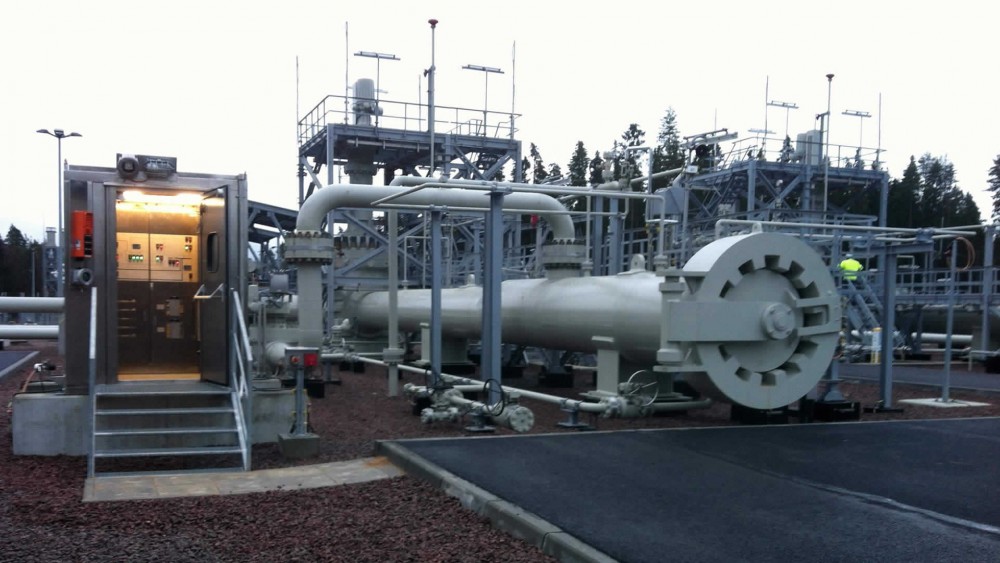As part of the Nord Stream pipeline project, Sofis valve operation has been chosen to provide an electro-mechanical control cabinet in combination with an interlocking system for the pigging process. A custom, explosion-proof and climate controlled control cabinet was designed and manufactured in close co-operation with Siemens AG.
Mechanical and electronic safety measures into one single safety system
Pigging is a notoriously complex process, but one which can be made significantly safer by using mechanical interlocks. A standard interlocking system guides the operator through the sequence safely.
Nordstream custom pigging cabinet
The control cabinet also displays the launcher and receiver layout, indicating vessel and pipeline pressure and MOV position at each stage of the sequence. Typically though, it does not include monitoring, it is not linked to the various pressure levels, and would not include the facility for remote operation of MOVs (Motor Operated Valves). The control cabinet that Sofis has designed for this project integrates all these aspects into one unit: remote MOV operation controls are included, and correct pressure and position of MOVs are conditional requirements to release the keys for each stage of the process. By locking the keys in place in a mechanical process control unit that forms part of the cabinet, only the correct process steps can be made and only when it is safe to do so.
Key cabinet, display, MOV control system and mechanical key control system into one unit
For this particular project the control cabinet also displays the launcher and receiver layout, indicating vessel and pipeline pressure and MOV position at each stage of the sequence. This custom designed solution from Sofis therefore combines the key cabinet, display, MOV control system and a mechanical key control system into one unit, meaning that the pigging operation is as centrally located as possible, but still mechanically safeguarded by the interlocking system. Following the Sofis philosophy, this project demonstrates that the intelligent use of electro-mechanical safety systems and key interlocking processes allows the potential risk of human error to be eliminated.


